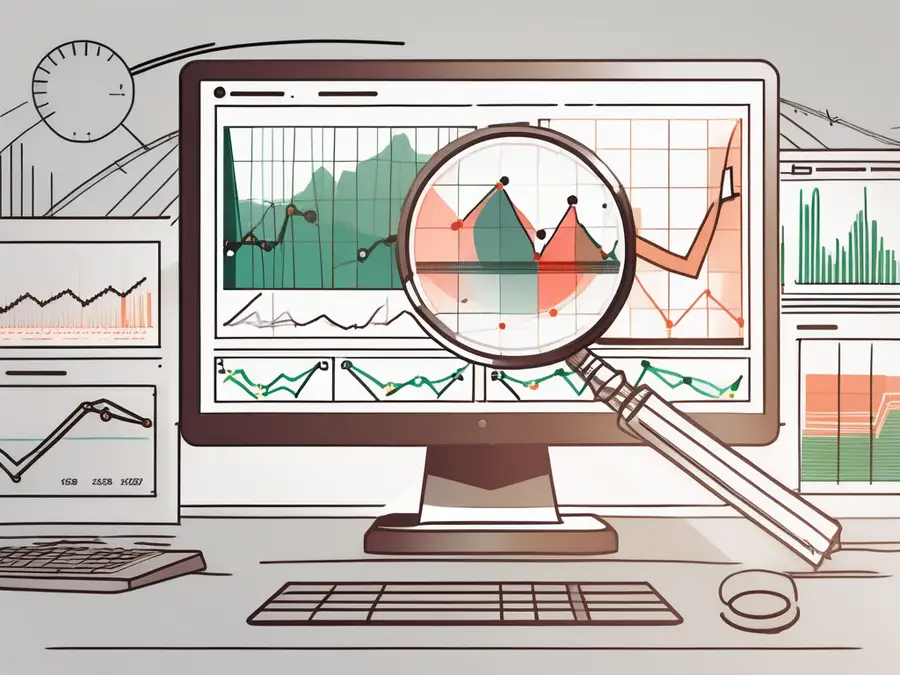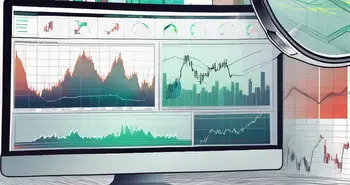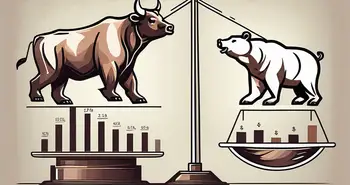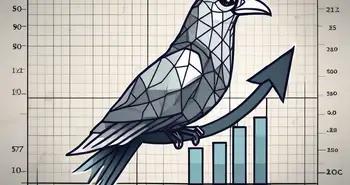Techniques for Backtesting Trading Strategies

As a seasoned trader, I can attest to the significant role that backtesting plays in the success of any trading strategy. In this comprehensive guide, I will walk you through the basics of backtesting, the crucial steps involved, popular software and tools, and potential pitfalls to avoid. So, let's dive in and explore the wonderful world of backtesting!
Understanding the Basics of Backtesting
What is Backtesting?
Backtesting, in simple terms, refers to the process of evaluating a trading strategy by applying it to historical market data. It allows traders to assess the strategy's performance under different market conditions and determine its potential profitability.
Backtesting is a crucial step in the trading strategy development cycle. By simulating trades on past data, traders can gain valuable insights into how their strategy would have fared in real-world scenarios.
Importance of Backtesting in Trading
Backtesting provides traders with a way to objectively assess the viability of their trading strategy. It helps in minimizing risks and increasing the chances of making profitable trades.
Through backtesting, traders can identify strengths and weaknesses in their strategies, refine entry and exit points, and optimize risk management parameters. It also enables traders to have confidence in their strategies and avoid impulsive decision-making based on emotions.
Key Components of Backtesting
Backtesting involves a few essential components that ensure accurate results:
- Data: Gather reliable historical price and volume data for the relevant financial instruments.
- Strategy Code: Develop or acquire a programming code that replicates your trading strategy.
- Testing Environment: Set up the backtesting environment with software or tools capable of executing your strategy on the historical data.
- Performance Metrics: Define metrics to measure the performance of your strategy, such as profit and loss, win rate, and drawdown.
- Analysis: Analyze the backtest results to decipher the strengths and weaknesses of your strategy.
When it comes to backtesting, the quality and accuracy of the data used play a crucial role in obtaining reliable results. Traders must ensure that the historical data they gather is from reputable sources and accurately reflects the market conditions during the specified time period. This includes considering factors such as bid-ask spreads, trading volume, and any significant events that may have influenced the market.
Furthermore, the strategy code used for backtesting should be meticulously designed and thoroughly tested. It should accurately replicate the trader's intended trading rules and incorporate any necessary parameters or variables. Any errors or inaccuracies in the code can lead to misleading backtest results and potentially flawed trading decisions.
Once the backtesting environment is set up, traders should define the performance metrics they wish to evaluate. These metrics can vary depending on the trader's goals and preferences. Some common performance metrics include profit and loss, win rate, maximum drawdown, and risk-reward ratio. By defining these metrics, traders can objectively measure the success of their strategy and make informed decisions based on the results.
Finally, the analysis of backtest results is a critical step in the backtesting process. Traders should carefully examine the performance metrics and compare them against their expectations and goals. This analysis can help identify areas of improvement, such as modifying entry and exit rules, adjusting risk management parameters, or even considering alternative strategies. It is essential to approach the analysis with an open mind and be willing to adapt and refine the trading strategy based on the insights gained from the backtesting process.
Steps to Backtest a Trading Strategy
Defining Your Trading Strategy
Before diving into backtesting, it's crucial to clearly define your trading strategy. Outline the rules for entering and exiting trades, position sizing, and risk management parameters. A well-defined strategy will serve as a solid foundation for your backtesting process.
Personal Advice: When defining your trading strategy, it's essential to consider your risk tolerance and investment goals. Stay true to your individual trading style and don't blindly follow popular strategies. Tailoring your strategy to your unique needs is the key to success.
Gathering and Preparing Historical Data
To start backtesting, you need high-quality historical data for the financial instruments you plan to trade. Ensure that the data encompasses a sufficiently long period, allowing you to evaluate the strategy's performance under various market conditions.
Moreover, it is vital to clean and normalize the data to eliminate any inconsistencies or errors. This step ensures the accuracy and reliability of your backtest results.
Implementing Your Strategy on the Data
With your historical data and strategy in hand, it's time to implement your strategy on the data. This involves coding your strategy or utilizing a backtesting software or platform that allows you to automate the execution of trades based on your predefined rules.
It's important to ensure that your implementation accurately reflects your strategy's logic, capturing all the necessary calculations and decision-making processes.
Analyzing the Backtest Results
Once the backtest is complete, it's time to analyze the results. Look beyond the simple profit and loss figures and delve deeper into various performance metrics. Assess metrics like the win rate, average profit per trade, drawdown, and risk-reward ratio.
By thoroughly analyzing the backtest results, you can gain insights into the strengths and weaknesses of your strategy. This analysis will guide you in making necessary adjustments to improve your strategy's performance.
Common Backtesting Software and Tools
Overview of Backtesting Software
Various backtesting software and platforms are available that can simplify the backtesting process. Some popular options include TradeStation, MetaTrader, and Amibroker.
These software applications provide intuitive interfaces, coding capabilities, and extensive libraries of technical indicators that can help you build and test your trading strategies effectively.
Features to Look for in Backtesting Tools
When choosing a backtesting tool, consider the following features:
- User-Friendly Interface: Look for a tool that offers an intuitive and user-friendly interface, making it easier to build and execute trading strategies.
- Customization Options: Ensure that the tool allows you to customize parameters, indicators, and other components of your strategy according to your requirements.
- Accuracy and Speed: Opt for a tool that provides accurate backtest results and performs calculations quickly, saving you valuable time.
- Reporting and Analysis: Look for tools that offer comprehensive reporting and analysis features, enabling you to assess your strategy's performance from multiple angles.
Potential Pitfalls in Backtesting
Overfitting Your Strategy
One of the significant pitfalls in backtesting is overfitting your strategy to historical data. Overfitting occurs when a strategy is overly optimized to fit past market conditions and fails to perform well in real-time trading.
Personal Story: Early in my trading journey, I fell victim to overfitting. I developed a strategy that performed exceptionally well on historical data, but when I started trading it live, the results were far from impressive. It was a valuable lesson that taught me the importance of robustness and adaptability in trading strategies.
Data Snooping Bias
Data snooping bias refers to the tendency of traders to unintentionally peek into future data during the backtesting process. It often results in inflated performance and unrealistic expectations.
To mitigate data snooping bias, it's crucial to establish strict rules and protocols during the backtesting process, ensuring that you only use information that would have been available at the time of trading.
Survivorship Bias
Survivorship bias occurs when only successful or surviving trades and instruments are considered in the backtesting process, ignoring those that have failed or delisted.
To avoid survivorship bias, it's important to include all relevant assets and account for their performance, even if they no longer exist or have underperformed in the past.
FAQ – Frequently Asked Questions
Q: Why is backtesting important for traders?
A: Backtesting allows traders to objectively assess the performance of their trading strategies, minimize risks, and increase the chances of making profitable trades. It helps identify strengths, weaknesses, and areas for improvement in the strategy.
Q: What components are essential for an accurate backtest?
A: To ensure accurate backtest results, you need reliable historical data, a well-defined strategy code, a suitable testing environment, performance metrics, and a thorough analysis of the results.
Q: Are there any common pitfalls to avoid in backtesting?
A: Yes, common pitfalls include overfitting your strategy to historical data, data snooping bias, and survivorship bias. It's important to develop robust and adaptable trading strategies and follow rigorous protocols during the backtesting process.
Q: Which backtesting software or tools should I consider?
A: Popular backtesting software and tools include TradeStation, MetaTrader, and Amibroker. When choosing a tool, look for a user-friendly interface, customization options, accuracy, speed, and comprehensive reporting and analysis features.
By following the steps outlined in this guide and being mindful of potential pitfalls, you'll be well-equipped to backtest your trading strategies successfully. Remember, backtesting is an ongoing process that requires constant evaluation and improvement. So, equip yourself with the necessary tools and knowledge, and let your backtesting journey begin!
Ready to put your backtesting knowledge into practice? Experience the future of trading with Morpher, the innovative platform where you can apply your strategies across a multitude of markets with zero fees and infinite liquidity. Whether you're looking to trade stocks, cryptocurrencies, or even unique assets like NFTs, Morpher's blockchain technology offers fractional investing, short selling without interest fees, and up to 10x leverage to enhance your trading potential. Plus, with the Morpher Wallet, you maintain full control over your funds. Sign Up and Get Your Free Sign Up Bonus today to start trading on a platform that's as advanced as your trading strategies!

Disclaimer: All investments involve risk, and the past performance of a security, industry, sector, market, financial product, trading strategy, or individual’s trading does not guarantee future results or returns. Investors are fully responsible for any investment decisions they make. Such decisions should be based solely on an evaluation of their financial circumstances, investment objectives, risk tolerance, and liquidity needs. This post does not constitute investment advice.

Painless trading for everyone
Hundreds of markets all in one place - Apple, Bitcoin, Gold, Watches, NFTs, Sneakers and so much more.

Painless trading for everyone
Hundreds of markets all in one place - Apple, Bitcoin, Gold, Watches, NFTs, Sneakers and so much more.









